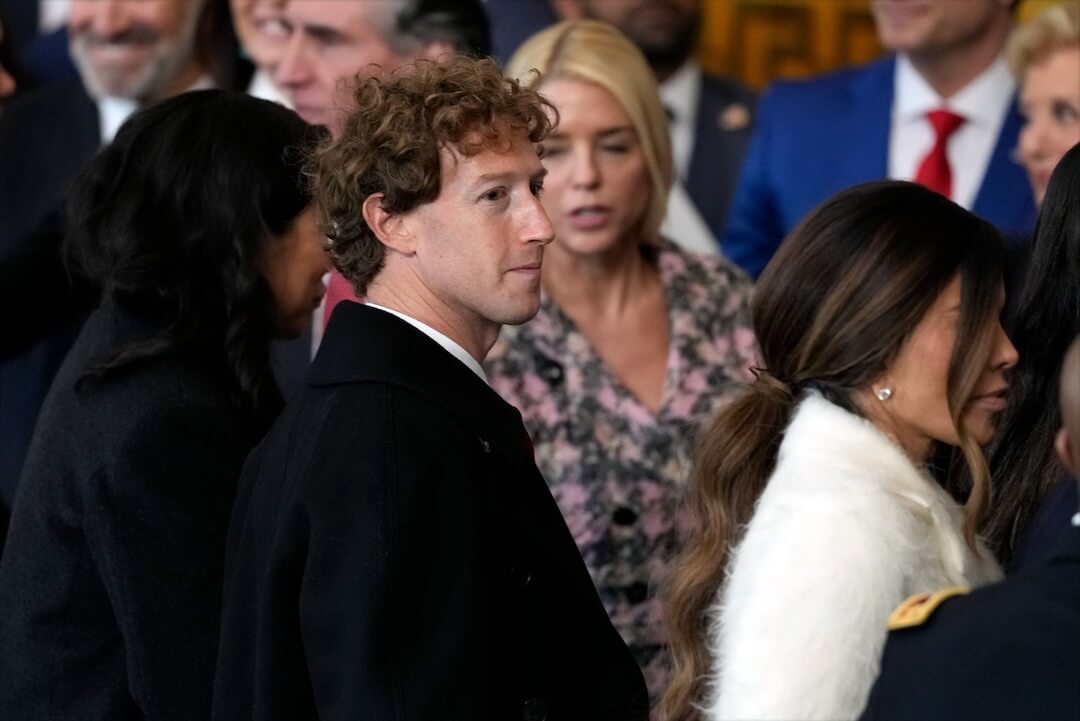The Poynter Report is our daily media newsletter. To have it delivered to your inbox Monday-Friday, click here.
Sports coverage ‘won’t be the same’
Before moving to Poynter in January 2019, I spent more than 30 years as a sportswriter, mostly at the Tampa Bay Times and Minneapolis Star Tribune. I was in locker rooms more than my actual newspaper offices for most of those years. In fact, I probably spent more time in locker rooms than anywhere except my own home.
For sports media, especially sportswriters who cover teams as a beat, more interviews, source-building and good stories are found in locker rooms than anywhere else. But, for now, those sportswriters will have to find somewhere else to get their stories.
The locker rooms are off limits because of the coronavirus.
Three of the four major North American sports leagues currently playing — Major League Baseball (with spring training), the National Basketball Association and the National Hockey League — have decided to ban the media from locker rooms. Locker rooms are only accessible by athletes and essential team staff, such as coaches and trainers. To accommodate the media, teams are generally making players available in press conference-type settings and, occasionally, on the phone.
Is it an overreaction or the right call? Because we don’t know what we don’t know, it’s hard to be critical of sports leagues for trying to protect their players and the media. Until we get a better handle on what we’re dealing with, it’s better to be safe than sorry.
But there is absolutely no question that coverage of sports teams will suffer because the media won’t have access to locker rooms. Marc Topkin, who has covered the Tampa Bay Rays for the Tampa Bay Times since the Rays broke into the majors in 1998, told me clubhouse access is especially valuable in baseball, where the narrative evolves every day.
“Most clips you see on the news are group postgame interviews,” Topkin said. “But the benefit — and that’s to the reporter, the player or coach, and the reader, viewer and fan — is the opportunity to have both informal and private conversations, which you can’t do in a group, before and after games. And to build the rapport and trust to continue to have those conversations.”
Topkin points out there are certain questions better asked in a quiet corner of a clubhouse than in a public setting in front of many cameras and recorders. In addition, reporters sometimes need to ask off-the-record questions for perspective, and those kinds of questions can’t be asked at a press conference.
“Maybe it’s a matter of asking a player about his contract, his relationship with another player, a family matter, or something else,” Topkin said. “And occasionally, selfishly, it’s for a scoop, some news that a reporter wants to check with a player on, or that the player wants to share.”
To be clear, Topkin said he understands that everyone’s health must be a priority for now, but there is a fear that teams and leagues never go back to allowing media in the locker rooms. And, typically, interviews done outside the locker room almost always include a team employee monitoring.
“My fear is that with the introduction of a third party — a team spokesman — players will be more inclined to decline an interview than they would be in person,” said Chandler Rome, who covers the Houston Astros for the Houston Chronicle. “The information would slow to a trickle and, potentially, be incomplete.”
La Velle Neal, who has been covering baseball for the Star Tribune in Minneapolis for more than 20 years and is on the board of the Baseball Writers’ Association of America, told me MLB’s decision about reporters in the clubhouse was a major topic among baseball writers earlier this week.
“In no way are we putting our issues ahead of Covid-19 — the fact there is no known vaccine makes my stomach twist,” Neal said.
But he said he worries that this temporary ban will become permanent and that it was important the MLB said it was only temporary.
“It is a big deal to be in the clubhouse,” Neal said. “The most casual of conversations can develop into awesome stories. You might walk in one day with a great story idea and literally bump into someone whose input can help you execute that great story. With the clubhouse being temporarily closed to media and non-essential club personnel, we are not going to be able to add as many voices to our stories and not report them as thoroughly as we would like. Being in the clubhouse allows us to approach players and coaches for interviews, which is much easier and more productive than having a media relations staffer chase down people in the clubhouse while we stand out in the hallway with our fingers crossed.”
Sports Illustrated soccer writer Grant Wahl set off a Twitter firestorm when he tweeted: “Many sports journalists will disagree, but I honestly don’t think we ever need to be in a locker room. Doing mixed-zone postgame interviews with the (United States Women’s National Team) outside their locker room has never been a problem.”
He was right about one thing. Many sports journalists disagreed. They blasted away at Wahl.
Longtime Pittsburgh columnist Dejan Kovacevic called Wahl’s tweet a “Reckless, ignorant and strikingly aloof take.” Dallas Morning News baseball writer Evan Grant called it an “insult to fellow journalists.” Hockey writer Rick Carpiniello, who covers the New York Rangers for The Athletic, called it a “ridiculous, uninformed take.” Longtime Buffalo News sports columnist Mike Harrington tweeted, “Absurd. Clueless. Pampered.”
New York Times national baseball writer Tyler Kepner tweeted, “It really sounds like you’re asking for less access overall. Baseball writers are vigilant about protecting our ability to do our jobs. Our access gets chipped away bit by bit, and it’s astonishing that a fellow writer would want to accelerate that process.”
On and on it went from those who do this job and can tell you how critical locker room access is. Even major-league star Joey Votto of the Cincinnati Reds sees the benefits of the media in a baseball clubhouse. Votto told C. Trent Rosecrans, who covers the Reds for The Athletic, that most stories involve “nuance, emotion and personal relationships” that come from regular and personal interactions.
For now, it appears that everyone understands the seriousness of the virus and potential health ramifications, and aren’t protesting too loudly about the ban. Nothing is more important than the wellbeing of a person. But sports coverage will suffer.
“Obviously there are other ways to get these questions asked, using social media or texting or calling a player when they are not at the field,” Topkin said. “But it won’t be the same.”
Covering COVID-19
The coronavirus is the dominant news story these days because it impacts each and every one of us in so many ways. In The Poynter Report, I’ve pointed out good journalism about the topic, as well as important information provided by various news organizations. And I will continue to do so, while also bringing you the other media news and analysis that you’re looking for each weekday.
But I also want to point you to the critical work of my colleague, Al Tompkins. Starting today and for the foreseeable future, Tompkins will offer “Covering COVID-19” — a daily coronavirus briefing for journalists. But news consumers will find it valuable as well. Tompkins will offer a menu of story ideas and innovative work about COVID-19. You can find it on our Poynter.org website, or sign up for his pop-up newsletter.
In his first edition, Tompkins addresses such key topics as “What are local jails and prisons going to do when COVID-19 is detected inside their walls?”; “Prepare people for a big surge in new positive cases”; and “Why did the CDC tell people ‘60 and over’ to stock up and stay home?”
Inside a lab fighting coronavirus

NBC News’ Lester Holt inside the lab at Regeneron Pharmaceuticals for a story on Tuesday night’s “Nightly News.” (NBC News)
Here’s the big question when it comes to coronavirus: How can we stop it? That topic was addressed on Tuesday night’s “NBC Nightly News with Lester Holt.” With rare access inside the Regeneron Pharmaceuticals lab that developed the Ebola vaccine, Holt spoke to CEO Leonard Schleifer, who said he is “optimistic” that a treatment can be found.
“So what we’re doing right now is we’ve got these several thousand antibodies, OK, and they are in the process of testing each antibody to see how well it blocks the virus,” Schleifer told Holt. “Over the course of the next several weeks, they will choose the best ones, create this cocktail, put it in the cell lines that can be scaled up to these giant vats and then off to the races.”
Schleifer said it’s the same technique used to combat Ebola and MERS.
Holt asked the other key question: If a vaccine is found, will it be affordable?
“Yes,” Schleifer said. “I guarantee you our product is going to be affordable. It doesn’t do anybody any good in this kind of setting or any kind of serious health setting not to make our products affordable.”
Answering your questions
Speaking of NBC, the streaming service NBC News Now will air a one-hour special tonight 8 p.m. Eastern with NBC News medical correspondent Dr. John Torres. He will be joined by other NBC News medical experts and business correspondents to answer viewer questions.
Democracy works from home
The Washington Post published a perspective piece Tuesday from William Hanage, an associate professor of epidemiology at the Center for Communicable Disease Dynamics at the Harvard T.H. Chan School of Public Health. In the piece, Hanage wrote, “So what we need to do now, before things get really bad, is think about how to protect the health-care systems we rely on and keep them from being overwhelmed by a surge of cases, as is already happening in Washington state. And here’s the thing: You can help just by working from home, if your job allows it.”
Well, it appears as if the Post is taking that advice.
Post publisher and CEO Fred Ryan is encouraging, but not mandating, that Post employees work from home starting today. According to Post media writer Paul Farhi, Ryan told staff in a memo, “We intend to continue our operations at full scale even with this change in employee locations.”
A local podcast about coronavirus
The Tampa Bay Times has started a coronavirus podcast called “Coronavirus in Florida.” (Coronavirus cases have been confirmed in the Tampa Bay area and other parts of the state.)
The Times wrote, “On the show, we’ll talk to experts and reporters, share the facts behind the spread of the virus and discuss what could happen next. Our aim is to answer your questions and counter the spread of misinformation about coronavirus and the disease it causes, COVID-19.”
The Times also notes that each episode will be only 10 minutes. (Note: The Times is owned by the Poynter Institute.)
No deal
There was a story circulating in recent days that ESPN was trying to make a trade with NBC to acquire “Sunday Night Football” play-by-play announcer Al Michaels. Well, forget it. It’s not happening.
New York Post sports media columnist Andrew Marchand, who broke the story that ESPN was trying to land Michaels and pair him with former NFL great Peyton Manning in the “Monday Night Football” booth, is now reporting that NBC has no interest in letting Michaels go.
An NBC Sports spokesperson told Marchand, “We look forward to Al completing his contract and calling ‘Sunday Night Football’ games on NBC.”
So where does that leave ESPN with “Monday Night Football?” It could stick with the current broadcasting team of Joe Tessitore and Booger McFarland, but Marchand reports the network is moving forward with hopes of signing Manning.
Having an influence
For this item, I turn it over to Poynter business analyst Rick Edmonds.
In the competition for reader attention and paid subscriptions, a new player has emerged — the influencer. Nudge CEO Ben Young’s excellent newsletter on sponsored content shared that successful influencer entrepreneurs — mostly young, mostly women, often focused on fashion and personal care — have built follower bases ranging into the six-figure territory or even millions, in a few cases.
Those who have captured big audiences are now selling a premium level of paywall protected content, sometimes at several levels, to their most enthusiastic customers. Nudge links to a thoroughly reported takeout on the phenomenon in Vogue Business, which estimates the total influencer market at $8 billion last year, rising to $15 billion in 2022.
I ran this by a couple of researchers studying how news organizations can compete with Netflix, Hulu and assorted other subscription-based products. The researchers said that they would classify influencers as in the entertainment segment rather than in news (as is, for instance, The Skimm news summary, which has an audience of seven million).
But verticals of niche information and advertising have been clobbering general content, and news is a subset of information — so we could be seeing a new front in that war.
Hot type
- The Atlantic contributing writer Yascha Mounk makes a case that in order to fight coronavirus, we should just cancel everything.
- Hollywood often makes movies based on real life. But it might have been ahead of the story when it comes to coronavirus. The New York Times’ Wesley Morris writes about the 2011 movie “Contagion.”
- Forbes is out with its list of America’s best startup employers, and it includes several media outlets, including The Athletic and Axios.
Have feedback or a tip? Email Poynter senior media writer Tom Jones at tjones@poynter.org.
Upcoming Poynter training
- Mining Stories from the 2020 Census (Webinar). Deadline: March 20.
- Summit for Reporters and Editors (Seminar). Deadline: March 27.
- Bring Poynter to your newsroom, classroom or workplace.
Want to get this briefing in your inbox? Sign up here.








